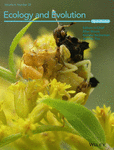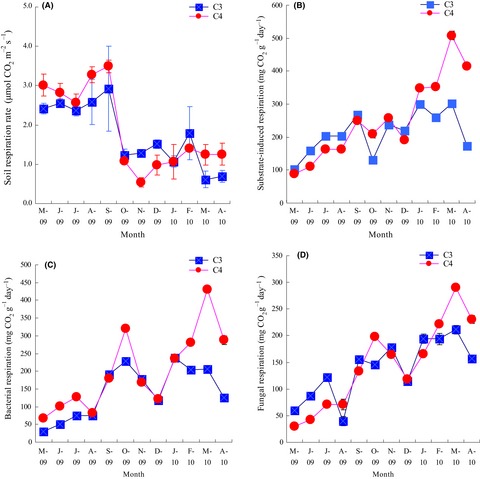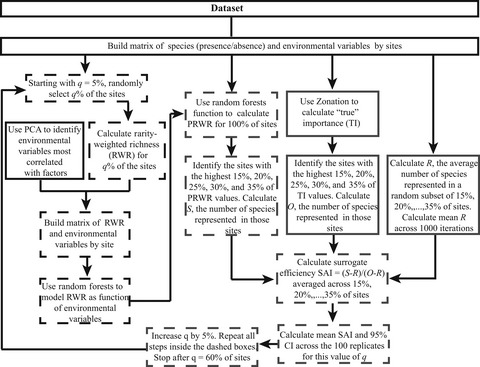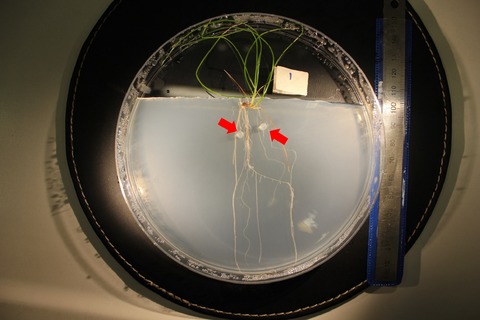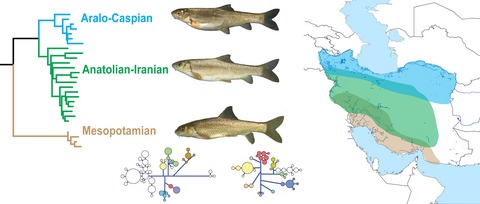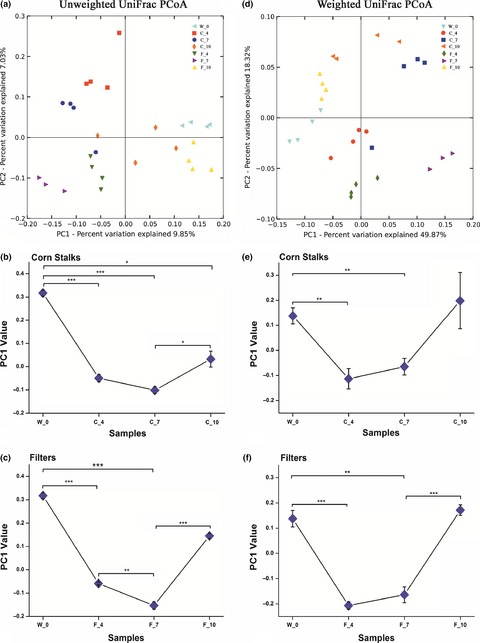Journal list menu
Export Citations
Download PDFs
Issue Information
Original Research
Genome methylation patterns across castes and generations in a parasitoid wasp
- Pages: 7943-7953
- First Published: 30 September 2016
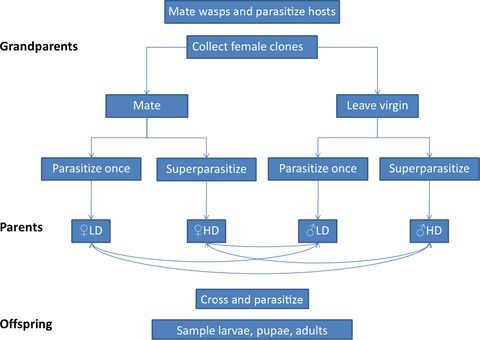
We explored the correlations between DNA methylation and phenotypic plasticity in a parasitoid wasp, both between and within generations. We asked whether the rearing conditions of parents affect the frequency and patterns of DNA methylation in their offspring, but did not find clear evidence for this. We did find differences in methylation profiles of the two unique larval castes of our study organism.
Environmental selection is a main driver of divergence in house sparrows (Passer domesticus) in Romania and Bulgaria
- Pages: 7954-7964
- First Published: 11 October 2016
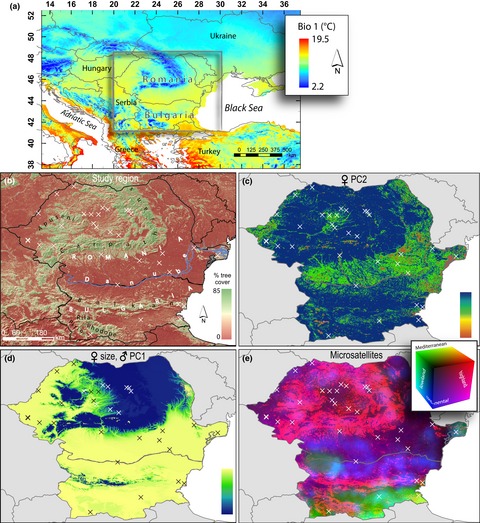
Both neutral and selective processes can cause population divergence, but their relative contributions as drivers of this process remain unclear. We investigated their relative roles in population divergence in house sparrows (Passer domesticus) from Romania and Bulgaria. Our results suggest that habitat heterogeneity, and not geographic and resistance distance, best explains population divergence, thus contributing to a growing body of evidence that adaptive evolution may be a major driver of diversification.
Both natural selection and isolation by distance explain phenotypic divergence in bill size and body mass between South Australian little penguin colonies
- Pages: 7965-7975
- First Published: 11 October 2016
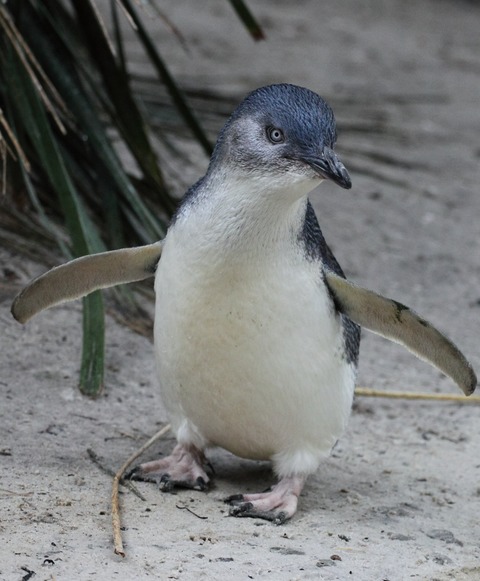
This study on wild little penguins examined small-scale geographic variation in bill size and body mass across five South Australian breeding colonies in relation to environmental parameters and geographic distances between the colonies. The results showed that variation in phenotypic traits in little penguins were correlated with environmental parameters and interpopulation distances. This is the first evidence for the combined roles of both genetic and environmental factors on population differentiation in a seabird species.
Changing climate mediates sapsucker (Aves: Sphyrapicus) hybrid zone movement
- Pages: 7976-7990
- First Published: 12 October 2016
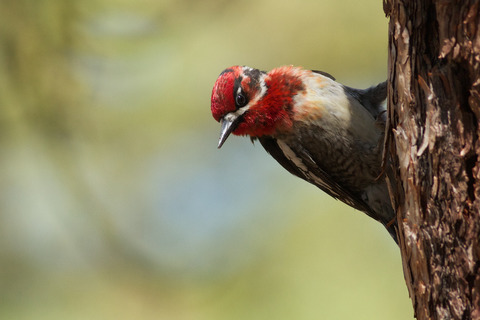
We found that climate has likely influenced hybrid zone movement between Red-naped and Red-breasted Sapsuckers in the Pacific Northwest of the United States over the past 100 years. A combination of warmer winter temperatures and precipitation changes is likely driving this change and is predicted to continue to influence movement of these two species and where they overlap and hybridize. As a result of climate change, the amount of overlap between these two species is also predicted to decrease, possibly resulting in reduced hybridization.
Flies evolved small bodies and cells at high or fluctuating temperatures
- Pages: 7991-7996
- First Published: 12 October 2016
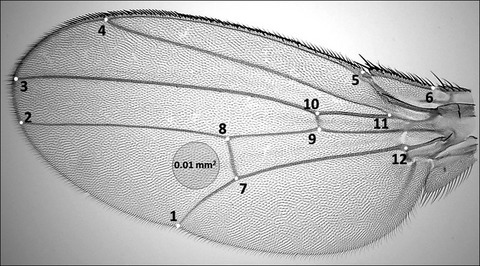
Experimental evolution at constant or fluctuating temperatures caused cell size to evolve. Cells of flies from fluctuating environments were intermediate in size to those of flies from constant environments. Most genetic variation in cell size was independent of variation in wing size, suggesting that cell size was a target of selection.
Concordance between stabilizing sexual selection, intraspecific variation, and interspecific divergence in Phymata
- Pages: 7997-8009
- First Published: 12 October 2016
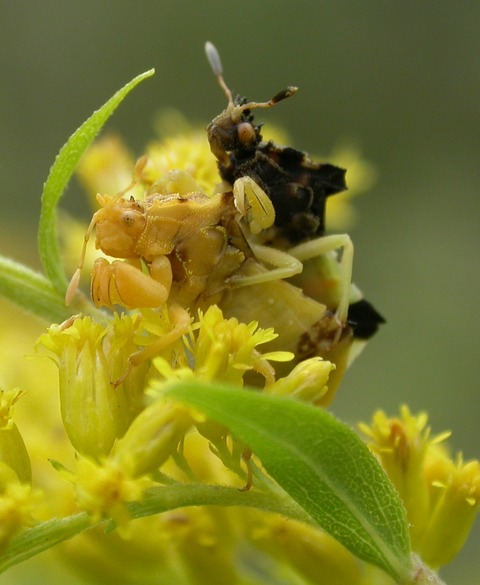
One apparent paradox is that although many studies detect strong contemporary selection and rapid microevolution, lineages typically exhibit long periods of stasis. A second, striking observation is that within-species trait variability often correlates with the extent of between-species trait divergence, leading some to invoke genetic constraints as an explanation. For a genus of insects, we show that data are consistent with an alternative explanation that (stabilizing sexual) selection shapes standing variation and that patterns of selection can themselves be conserved over macroevolutionary timescales.
Does the different photosynthetic pathway of plants affect soil respiration in a subtropical wetland?
- Pages: 8010-8017
- First Published: 13 October 2016
Latitudinal variation in nematode diversity and ecological roles along the Chinese coast
- Pages: 8018-8027
- First Published: 13 October 2016
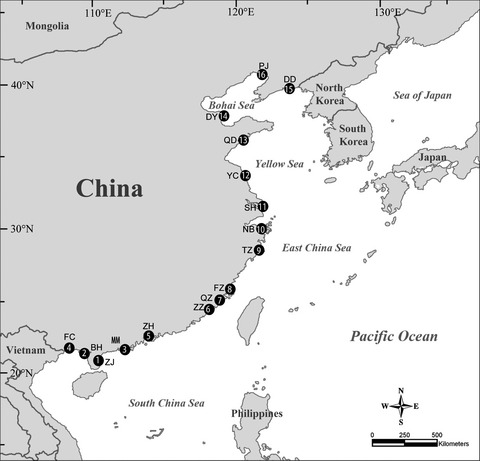
The nematode phylogenetic relatedness, niche breadth, and life-history strategies along a latitudinal gradient were examined in the Pacific coast of China. Nematode niche breadth was narrower at lower latitudes with respect to dietary specificity. Lower latitudes with a less variable climate favour K over r life-history strategists and contained phylogenetically more closely related species.
Experimentally comparing the attractiveness of domestic lights to insects: Do LEDs attract fewer insects than conventional light types?
- Pages: 8028-8036
- First Published: 13 October 2016
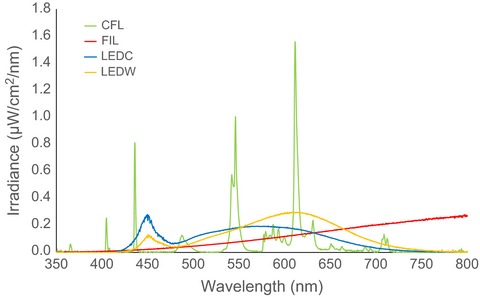
As the LED lighting sector continues to grow globally, we investigated how LED bulbs compare in their attractiveness to nocturnal insects. We found that LEDs attracted significantly fewer insects than other competing light sources, but found no significant difference in attraction between the “cool-“ and “warm-white” LEDs. Fewer flies were attracted to LEDs than alternate light sources, including fewer biting Culicoides midges (Diptera: Ceratopogonidae).
Nonmotorized recreation and motorized recreation in shrub-steppe habitats affects behavior and reproduction of golden eagles (Aquila chrysaetos)
- Pages: 8037-8049
- First Published: 13 October 2016
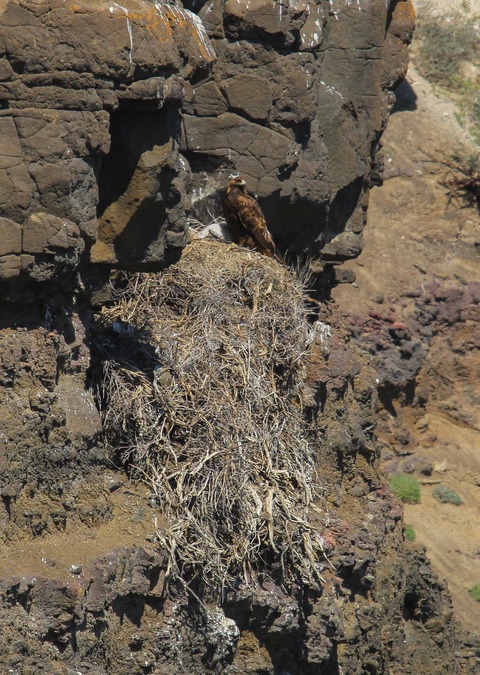
Multiple-use recreation in shrub-steppe ecosystems create complex disturbance regimes that vary spatially and temporally, and influence key life stages of breeding golden eagles. Off-road vehicle use decreased territory occupancy, while eagles were less likely to lay eggs in territories with more early-season pedestrian use. Off-road vehicle use negatively affected nest survival by bringing pedestrians to remote nest sites, which reduced nest attendance. Wildlife and recreation managers should consider effects from motorized and nonmotorized recreation.
Phylogeography of the antilopine wallaroo (Macropus antilopinus) across tropical northern Australia
- Pages: 8050-8061
- First Published: 14 October 2016
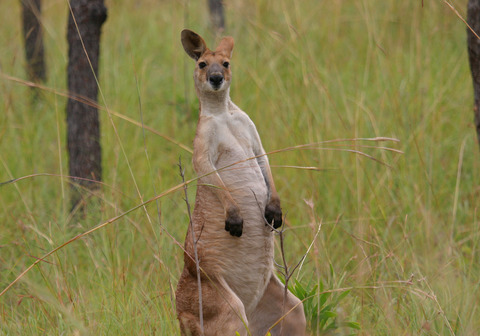
This study examines the phylogeography of the antilopine wallaroo across northern Australia using sequence data from three mitochondrial genes. Data were obtained from DNA extracts, cryo-preserved tissue samples, and bone samples. MtDNA diversity of the antilopine wallaroo revealed an unexpectedly complex evolutionary history involving multiple sympatric and parapatric mtDNA clades across northern Australia.
Cool habitats support darker and bigger butterflies in Australian tropical forests
- Pages: 8062-8074
- First Published: 14 October 2016
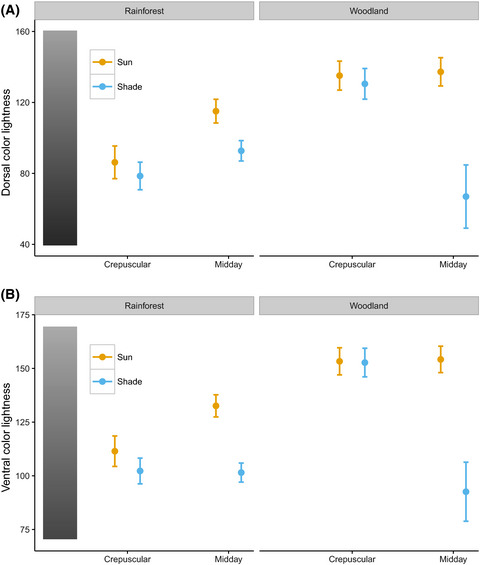
We examined variation in color lightness and body size within butterfly assemblages across hot and cool habitats in the tropical woodland–rainforest ecosystems of Australia and found butterfly individuals were significantly darker and larger in cool, closed-canopy rainforests than in immediately adjacent and warmer open woodlands. This study highlights how butterfly species might differentially respond to climate warming based on ecophysiologically relevant traits and how thermal refugia might emerge at microclimatic and habitat scales.
Microbial community responses to soil tillage and crop rotation in a corn/soybean agroecosystem
- Pages: 8075-8084
- First Published: 14 October 2016
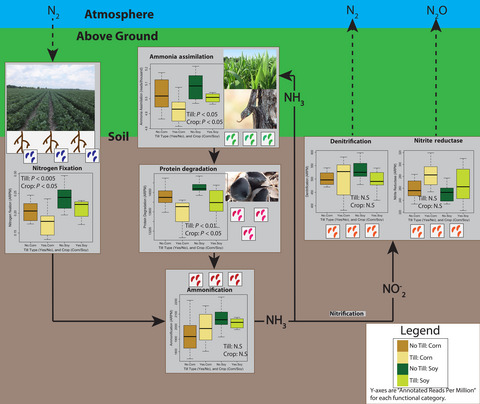
Microbial communities are essential for nutrient cycling in ecosystems. Disturbance, such as tilling, alters the composition of microbial communities in corn and soy agroecosystems. The changes in these communities affect their composition and function, thus changing the ecosystem services they perform, such as cycling nitrogen.
Intragenomic conflict produces sex ratio dynamics that favor maternal sex ratio distorters
- Pages: 8085-8093
- First Published: 15 October 2016
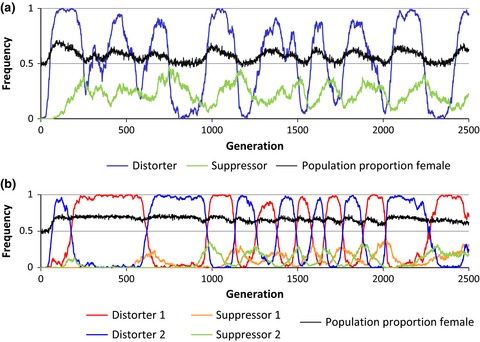
We used individual-based computer simulation modeling to explore the intragenomic conflict between sex ratio distorters and their suppressors. We examined the impacts of these dynamics on population-level competition between species characterized by MSDs and those lacking them. MSD populations often exhibited enhanced productivity and outcompeted non-MSD populations, suggesting that distorter–suppressor conflict can provide population-level advantages, potentially helping to explain the persistence of sex ratio distorters in a range of taxa.
Climate extremes are associated with invertebrate taxonomic and functional composition in mountain lakes
- Pages: 8094-8106
- First Published: 17 October 2016
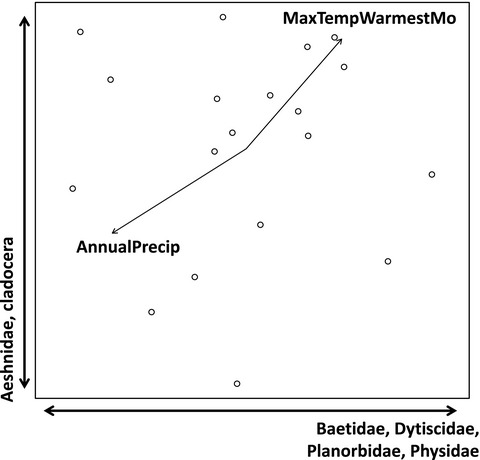
Despite growing variability in global climate, most studies of the drivers of community structure still consider only mean environmental parameters, and therefore, our understanding of the impacts of extreme climate conditions on biological communities is still limited. We used a linear modeling approach to examine the local, regional, and climate determinants of invertebrate taxonomic and functional diversity in widely distributed mountain lakes in California, USA. Our approach revealed the previously unappreciated role of extreme climate conditions in taxonomic and functional structure.
Predicted rarity-weighted richness, a new tool to prioritize sites for species representation
- Pages: 8107-8114
- First Published: 17 October 2016
Diversification in wild populations of the model organism Anolis carolinensis: A genome-wide phylogeographic investigation
- Pages: 8115-8125
- First Published: 17 October 2016
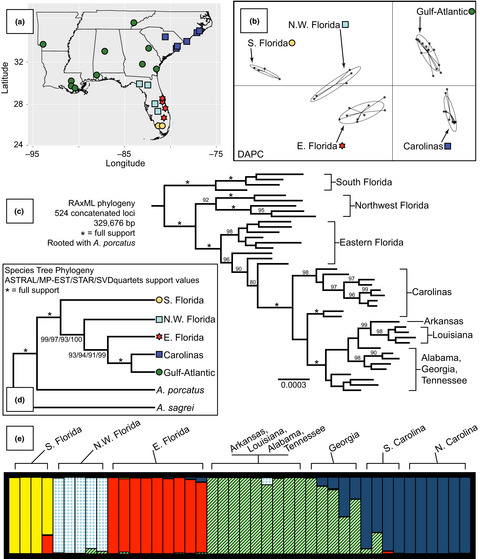
The green anole (Anolis carolinensis) is a model organism for multiple scientific fields, but has a complex and unclarified recent evolutionary history. Here, we used target capture of hundreds of genetic markers to ascertain the evolutionary relationships of five phylogeographic clades. We identified diversification northward out of Florida based on patterns of genetic diversity and differentiation.
Interactive effects between plant functional types and soil factors on tundra species diversity and community composition
- Pages: 8126-8137
- First Published: 17 October 2016
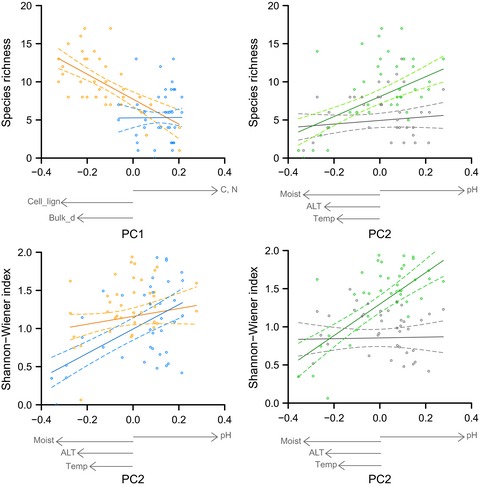
Despite the differential processes interacting with plant functional types (PFT) to promote community assembly and ecosystem functioning, research is strongly biased toward vascular plants. Here, we show that the relationships of species diversity and community composition with edaphic factors are PFT-specific in the Siberian Arctic tundra. Our results suggest that incorporating nonvascular vegetation and differential responses of PFT in dynamic vegetation models is crucial for projecting vegetation shifts, primary productivity, and in turn, ecosystem functioning in a changing climate.
Brood size moderates associations between relative size, telomere length, and immune development in European starling nestlings
- Pages: 8138-8148
- First Published: 17 October 2016

Is it beneficial or costly to be larger if you are a starling nestling? We test the hypothesis that the answer depends on the context: If competition is high, it is advantageous to be larger in order to win out; if competition is low, then energy spent on growing large is energy not spent on other functions. In accordance with this hypothesis, we show that the size of the brood moderates the association between body size and telomere attrition during the nestling period.
Effect of different root endophytic fungi on plant community structure in experimental microcosms
- Pages: 8149-8158
- First Published: 18 October 2016
Stable isotope-based trophic structure of pelagic fish and jellyfish across natural and anthropogenic landscape gradients in a fjord estuary
- Pages: 8159-8173
- First Published: 18 October 2016
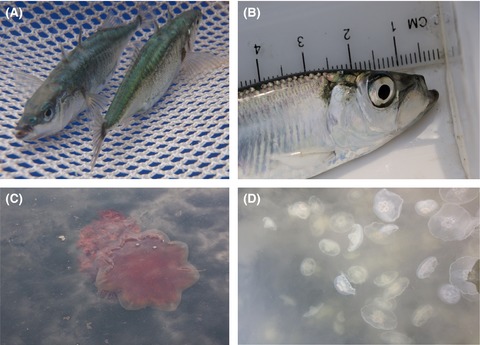
Jellyfish appear to be increasing at the expense of forage fish in many areas of the world, potentially a consequence of altered trophic dynamics. We used stable isotopes to determine trophic relationships and emergent trophic structure of pelagic fish and jellyfish in an urbanizing fjord estuary. We found fish–jellyfish trophic relationships were context dependent and that landscape gradients of freshwater influence appeared to account for spatiotemporal variation in overall trophic diversity.
Impact of urbanization and gardening practices on common butterfly communities in France
- Pages: 8174-8180
- First Published: 18 October 2016
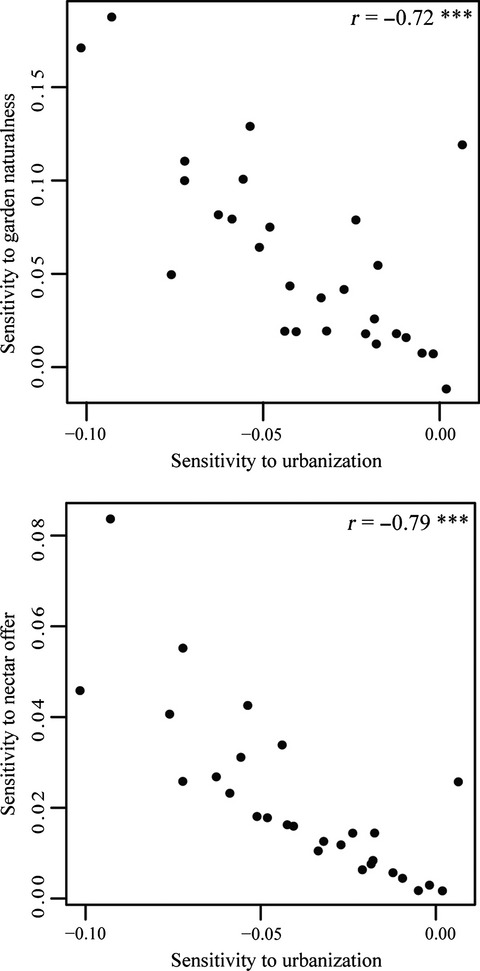
The interacting impacts of urban landscape and gardening practices on the species richness and total abundance of communities of common butterfly communities across France were studied using data from a nationwide monitoring scheme. Urbanization has a strong negative impact on butterfly richness and abundance but that at a local scale, such impact could be mitigated by gardening practices favoring nectar offer.
Collateral damage to marine and terrestrial ecosystems from Yankee whaling in the 19th century
- Pages: 8181-8192
- First Published: 19 October 2016
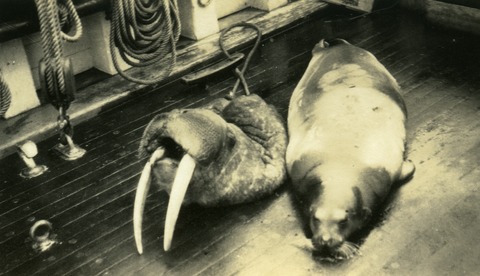
The American whaling fleet of the 1800s traveled the globe in search of whales, yet the great whales were not the only species captured by these commercial voyages. In this article, we document the diversity of both marine and terrestrial species targeted and show that each whaling vessel on average took approximately 36 kg of nongreat whale biomass from the oceans and the land per day at sea.
Dispersal and group formation dynamics in a rare and endangered temperate forest bat (Nyctalus lasiopterus, Chiroptera: Vespertilionidae)
- Pages: 8193-8204
- First Published: 20 October 2016
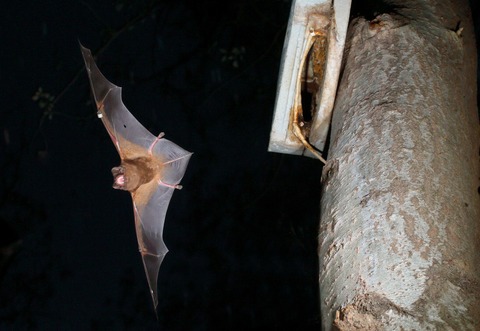
Genetic methods can be an important tool for deciphering the complex social habits of small, vagile species. We studied the genetic structure and distribution of female kin of a rare and endangered temperate bat, Nyctalus lasiopterus, across four maternity colonies in Andalusia, Spain. The crash and recolonization of one of these sites provided us with the rare opportunity to study colony formation in a social species from a genetic standpoint. Genetic structure was weak or absent across colonies, even at the mitochondrial level. However, the distribution of close kin suggested strong philopatry, and average parwise-relatedness among colonizers was high. Photo: Jens Rydell
Phylogenetic relationships of freshwater fishes of the genus Capoeta (Actinopterygii, Cyprinidae) in Iran
- Pages: 8205-8222
- First Published: 20 October 2016
Species mixture effects on flammability across plant phylogeny: the importance of litter particle size and the special role for non-Pinus Pinaceae
- Pages: 8223-8234
- First Published: 20 October 2016
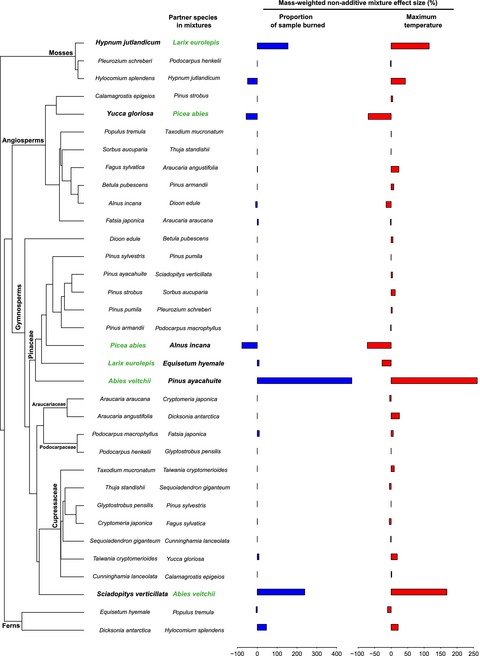
In this work, we did an experimental comparative study of the air-dried surface litterbed flammability across 34 phylogenetically wide-ranging plant species and 34 random two-species mixtures from them. We try to use phylogenetic distance between plant species as an integrative proxy for species trait differences; and at the same time, we measured the recognized key traits to litterbed flammability: litter particle size and litter bed packing. We found that litter particle size, but not phylogenetic distance, explained species’ nonadditivity in flammability; all species pairs that showed remarkably large effect sizes of nonadditivity in flammability, both positive and negative, involved the non-Pinus Pinaceae which shed small needles producing densely packed, poorly ventilated nonflammable litterbeds when monospecific.
Diversity and resilience of the wood-feeding higher termite Mironasutitermes shangchengensis gut microbiota in response to temporal and diet variations
- Pages: 8235-8242
- First Published: 20 October 2016
Putting the behavior into animal movement modeling: Improved activity budgets from use of ancillary tag information
- Pages: 8243-8255
- First Published: 20 October 2016
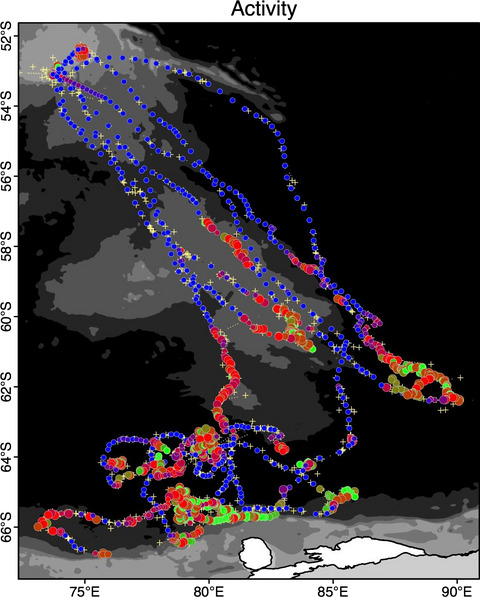
We present two state-space models for animal movement that each differently incorporates ancillary telemetry data to inform three distinct movement states. These are applied to two case studies: for Weddell seals that haulout on ice and for Antarctic fur seals that rest at sea. Provision of an array of model structures can improve inference about animal space use and behaviour and give the biotelemetry community greater flexibility in appropriately addressing the movement ecology of their study species.
Effects of environmental factors on genetic diversity of Caragana microphylla in Horqin Sandy Land, northeast China
- Pages: 8256-8266
- First Published: 20 October 2016
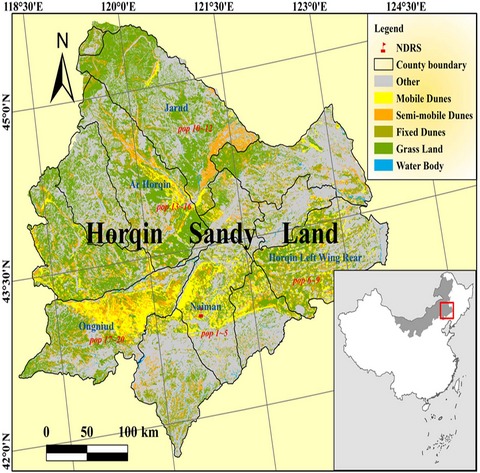
Caragana microphylla (Leguminosae) is a dominant climax semishrub species in northern China. We evaluated genetic variation within and among populations sampled from three different environmental gradients in Horqin Sandy Land in northern China using intersimple sequence repeats markers and investigated the possible existence of relationships between genetic diversity and environmental factors.
Host-mediated shift in the cold tolerance of an invasive insect
- Pages: 8267-8275
- First Published: 20 October 2016
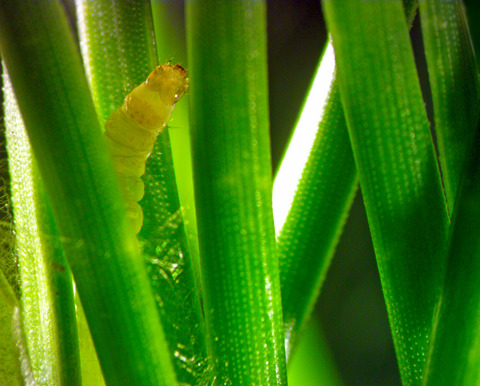
We show that host plant influences the cold tolerance of an exotic, invasive insect (Epiphyas postvittana). The ability of our test species to survive the onset of freezing changes systematically with host quality. The nature and direction of the changes in cold tolerance that we observed are consistent with extant theories on the evolution of insect freeze tolerance.
On the influence of provenance to soil quality enhanced stress reaction of young beech trees to summer drought
- Pages: 8276-8290
- First Published: 21 October 2016
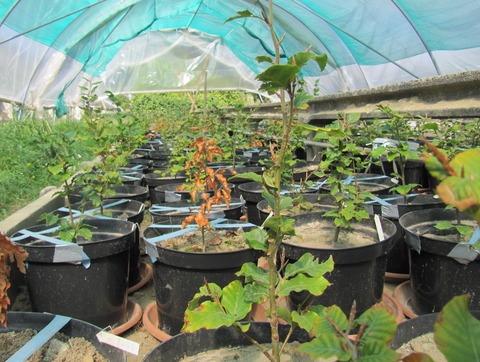
Natural stable isotope concentration in leaves and above- and belowground growth parameters were used to characterize stress reaction of young beech saplings to experimental drought. Main focus was the differentiation of reaction between different pre-adapted provenances and the influence of soil quality on the reaction. Results indicate a provenance-dependent reaction to low-quality soil which goes well along with the soil quality in the area of origin. This has strong implication for modeling approaches and applications in forest science.
A sixth-level habitat cascade increases biodiversity in an intertidal estuary
- Pages: 8291-8303
- First Published: 21 October 2016
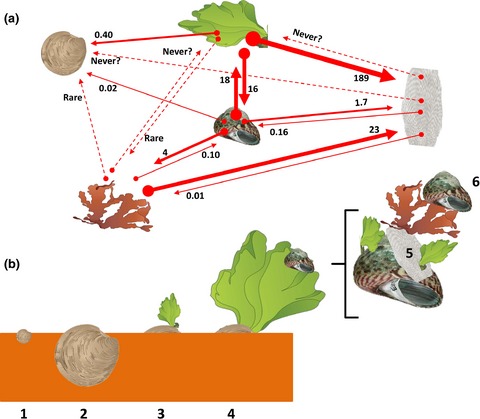
We documented a sixth-level long estuarine habitat cascade, where a bivalve provided habitat for a green seaweed that provided habitat for snails, that provided habitat for a nonnative bryozoan that provided habitat for a red seaweed that again provided habitat for more snails, thereby resetting the sequence of the habitat cascade. We showed that the strength of facilitation increased with seaweed frond size, accumulated seaweed biomass, accumulated shell biomass but less with shell size, and manipulative experiments confirmed that the amount of seaweed and snails was consistent regulators of the habitat cascade. We interpreted this cascade as a habitat-formation network that describes the likelihood of an inhabitant being found attached to a specific habitat-former and conclude that the strength of the cascade increased with the amount of higher-order habitat-formers, with differences in form and function between higher and lower-order habitat-formers, and with the affinity of inhabitants for higher-order habitat-formers.
Population genetic isolation and limited connectivity in the purple finch (Haemorhous purpureus)
- Pages: 8304-8317
- First Published: 21 October 2016
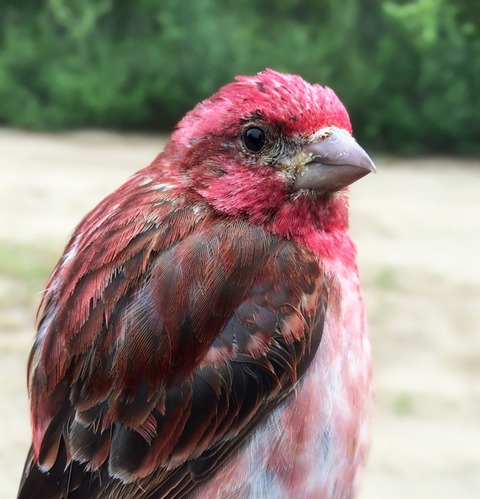
Our study examined the taxonomy, historical isolation, and contemporary population genetic structure of the two purple finch subspecies (H. p. purpureus and H. p. californicus). The data show that the two subspecies experienced prolonged isolation due to advancing ice sheets during the Pleistocene era, likely in two refugia separated by the Rocky Mountains. We determined that while the two subspecies remain reproductively isolated throughout most of their range, a contact zone is present in central British Columbia.
Importance of geographic origin for invasion success: A case study of the North and Baltic Seas versus the Great Lakes–St. Lawrence River region
- Pages: 8318-8329
- First Published: 21 October 2016
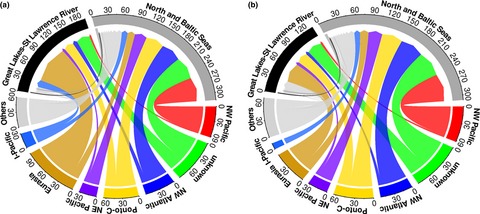
To determine whether species evolved in certain areas have inherent advantages over other species in colonizing new habitats, we explored nonindigenous species (NIS) established in the North and Baltic Seas and Great Lakes–St. Lawrence River regions—two areas intensively studied in concern to NIS and highly invaded by Ponto-Caspian species—and compared observed to expected numbers of NIS from major donor regions. Ponto-Caspian taxa colonized both types of habitats, saltwater areas of the North and Baltic Seas and freshwater of the Great Lakes–St. Lawrence River, in much higher numbers than expected. Although we cannot exclude the influence of other transport vectors, our findings suggest that the origin of the species plays an important role for the predisposition of successful invaders.
Spatial pattern of distribution of marine invertebrates within a subtidal community: do communities vary more among patches or plots?
- Pages: 8330-8337
- First Published: 22 October 2016
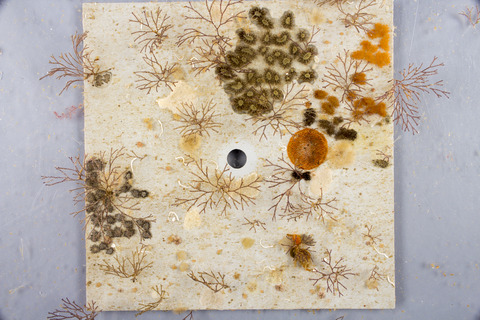
An essential first step in determining the relative roles of niche versus neutral processes in driving community variation is to decompose spatial patterns of variation in the absence of environmental gradient. Stochastically varying marine invertebrate community was partitioned into spatially explicit components using a purely random-effects model. Community-level structure consistently showed significant variation on the among-patch scale over time. Distribution of key taxa only showed patchiness during certain successional stages that correspond to taxa's specific life-history strategies.




